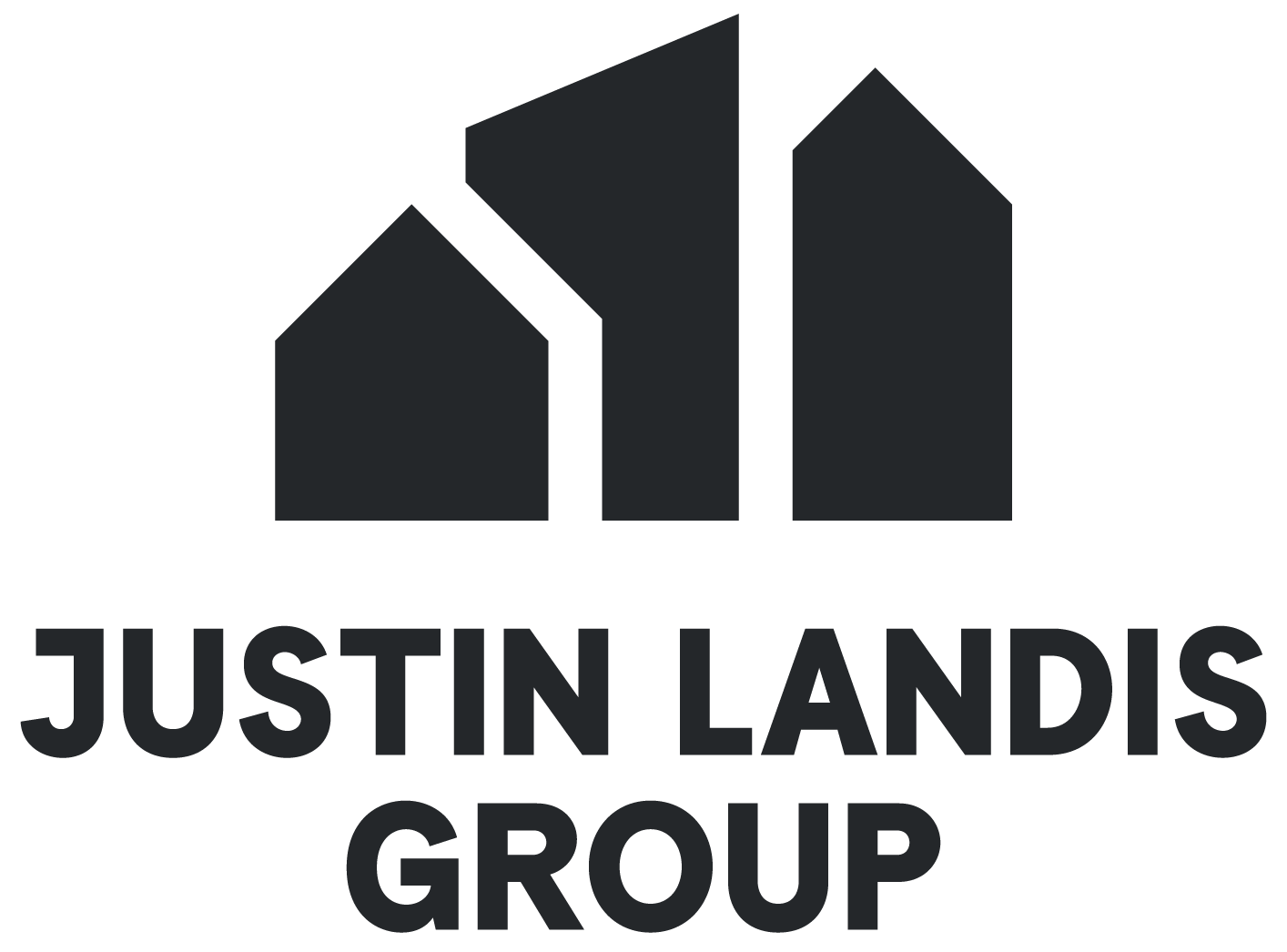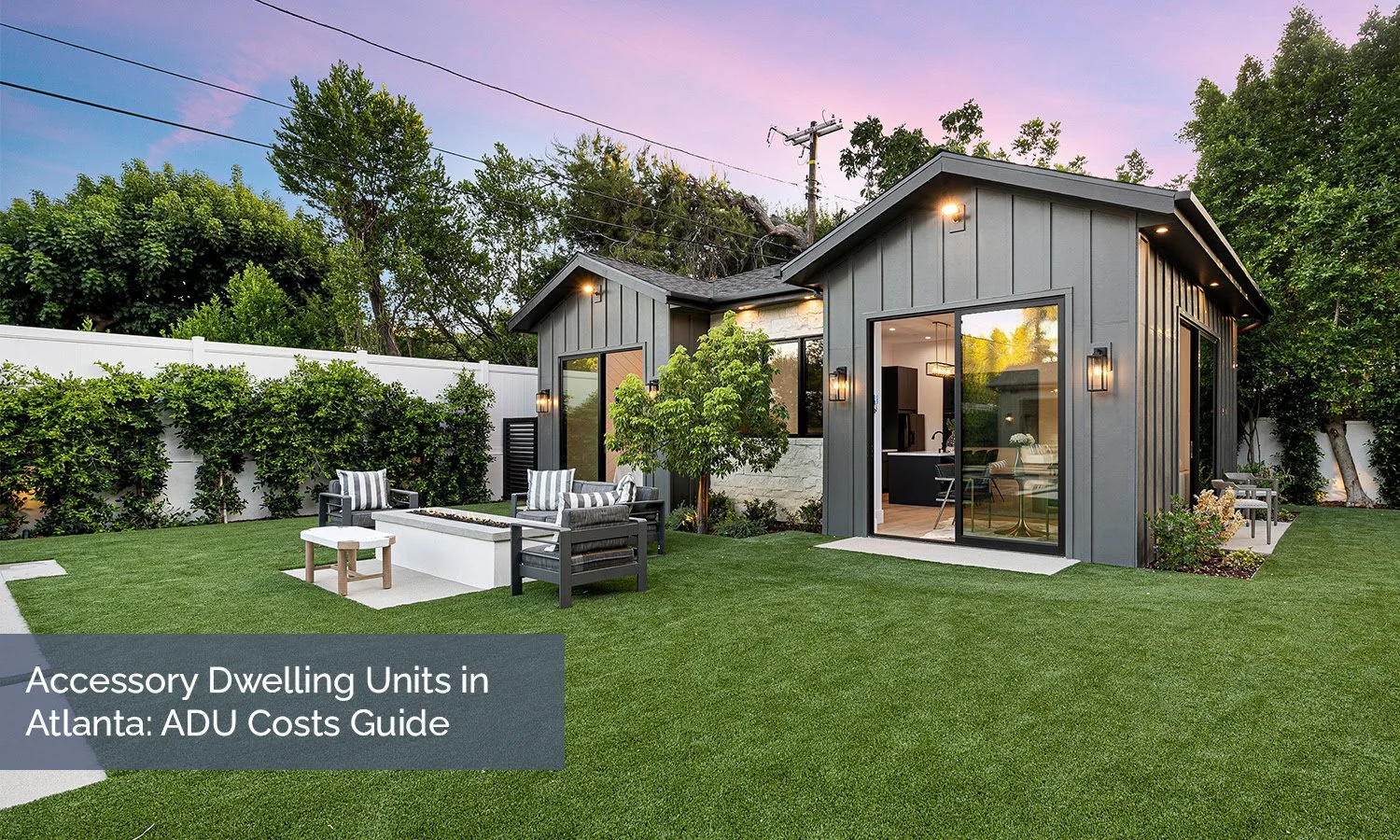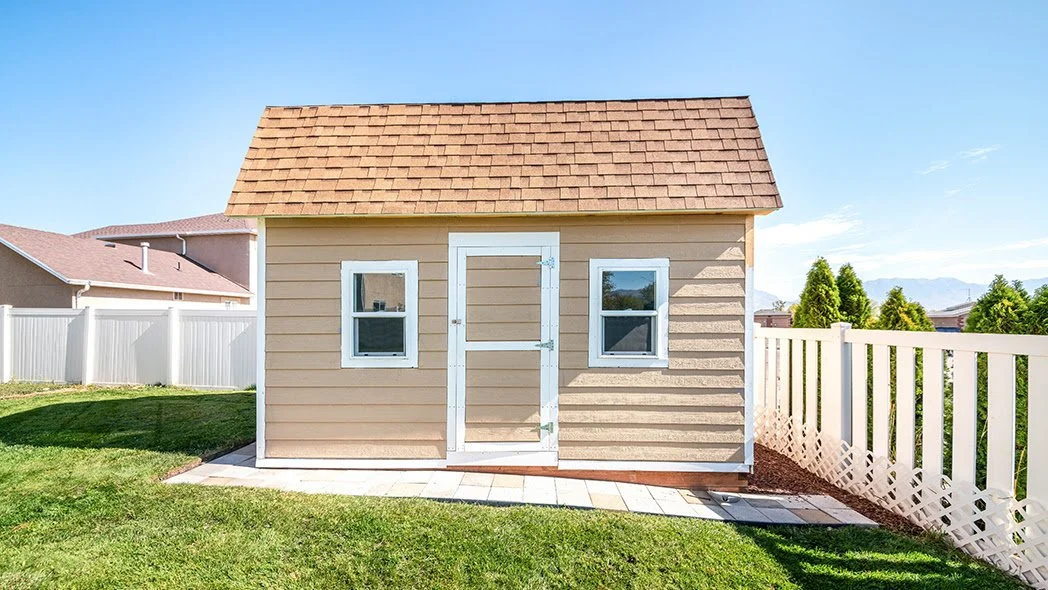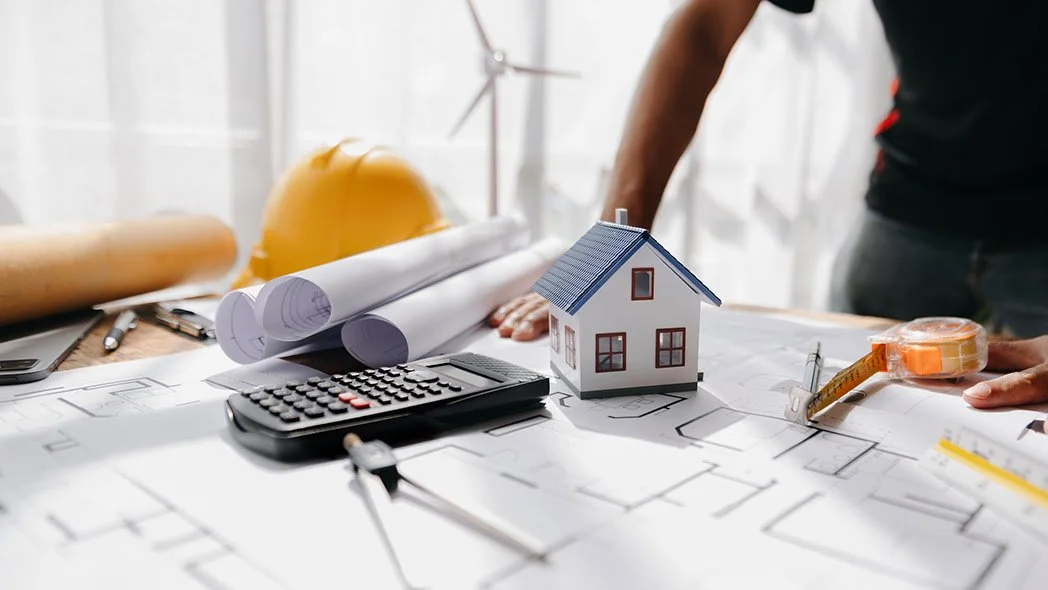Accessory Dwelling Units in Atlanta: ADU Costs Guide
You now have far more wiggle room to add an accessory dwelling unit in Atlanta. The zoning rules changed back in 2021, so a small backyard cottage or a converted garage can legally sit on your lot without nearly as much red tape as before.
Most homeowners now see that an ADU usually lifts resale prices and sets up a more flexible way to live. You might use the extra place for your aging parents, a returning college student, or that long-term guest who still wants a bit of their own personal space. Try to consider the different ways that arrangement could make your day-to-day life easier.
As for the budget, plan on $80,000 to $250,000 in Atlanta. Costs swing up or down depending on whether you pour a brand-new foundation or redo the existing basement. Once the space is ready, most owners see rental checks landing between $550 and $1,300 each month. That range covers everything from a basic design to a higher-end layout with higher-quality finishes.
To make the numbers make sense, first sketch a design that fits the lot, gather a few contractor bids, and build a financing plan before you break ground. With everything prepared that way, the patch of ground out back can become a real asset instead of just extra lawn to mow.
What Does an ADU Cost in Atlanta?
Sticker shock really hits fast once you start adding up the various numbers, and most Atlanta accessory dwelling units land somewhere between 80,000 and 250,000 dollars. That spread gives you a quick sense of where your own project might settle.
Size actually drives the bill first, since the City of Atlanta caps an ADU at 750 square feet. The smaller you make the footprint, the lower the material and labor totals stay. Location comes next. A backyard cottage in Kirkwood frequently reaches around 180,000 dollars, and turning an existing garage in Buckhead usually finishes nearer to 90,000.
Layout quirks on your lot and any challenging utility connections can push costs higher very quickly, so you want to look at those factors early. Construction style matters, too. A brand-new detached unit usually starts close to 112,000 dollars for about 400 square feet, and this number works as a helpful baseline. Digging out or converting a basement tends to increase costs quite a bit, and high-end versions can often climb toward 380,000 dollars.
Square-foot pricing runs all over the map, anywhere from roughly 162 to 682 dollars. A 2024 survey puts the average total around 181,000 dollars, though your own decisions will move that figure up or down.
Rental income helps lots of homeowners balance the ledger. One-bedroom units usually pull in 550 to 950 dollars each month, and two-bedroom spaces can reach 1,100 to 1,300 dollars. Those checks usually cover a sizable slice of the mortgage or the construction loan payment.
Set aside some money for permits, design plans, and utility hookups because those costs sneak onto the invoice more often than people expect. A quick conversation with a local builder gives you numbers that match your street, slope, and soil right from the start.
Fee schedules change between neighborhoods, so lining up paperwork before you pour concrete saves late-stage penalties. As for funding, you could draw on a home-equity line, request a cash-out refinance, get a construction loan, or dip into savings. Each option has its own timeline for closing costs and interest rate, so comparing them side by side usually pays off.
How to Learn The Atlanta Zoning Rules?
First, check Atlanta's zoning limits, because the city caps every backyard ADU at 750 square feet. With that ceiling in place, you actually have to think through the room arrangement from the beginning. A footprint that size usually works for a studio or a snug one-bedroom. But it seldom leaves any space for anything bigger. If you were picturing two bedrooms and a separate office, you'll most probably need to scale things back or get creative with movable partitions.
Next, look at the setback rules, since those numbers determine where the building can actually sit. Your ADU has to stay a certain distance from each property line, and in most zones, that means at least 7 feet on the sides. The spacing prevents structures from crowding neighbors or sidewalks and helps the street hold a steady rhythm. Sketch the footprint on a site plan early so you can see if the walls meet those margins.
Zoning districts often differ across Atlanta, so double-check that your lot even permits an accessory unit. If you land in R-5 or another compatible district, you're in luck. If not, you might need a variance, or you might simply have to pause the project for the time being. Pull up the Atlanta Zoning Atlas, drop in your address, and confirm the district before you spend a single dollar on drawings. I've watched more than one homeowner sink months of effort only to learn that their block bans ADUs.
Once the zoning lines up, the permit application comes next, and unfortunately, this step can move more slowly than you expect. The city charges fees that usually land somewhere between eight hundred and fifteen hundred dollars, give or take. Along with the check, you'll generally hand over a stack of site plans, floor plans, and construction specifications. Having those papers prepared and stamped can take a few weeks all by itself.
Even after you file, the review queue can stretch out. Every missing signature or measurement sends the packet back to you, and each round trip bumps the schedule and creates little costs you didn't plan for. Build at least a month of wiggle room into your calendar, and you'll probably thank yourself later.
At this point, many homeowners start questioning why creating a basic backyard cottage typically requires so many steps. The city uses strict regulations to keep neighborhoods safe and visually uniform. But that big picture seldom eases the day-to-day frustration. Take a breath, stay organized, and always keep copies of every receipt and email.
Now think about utilities, because hooking up water, sewer, and power frequently surprises people. A sewer tie-in normally needs its own permit plus an on-site inspection. If the lot slopes poorly, stormwater requirements could add a small drainage system to the design, and this upgrade usually costs a few thousand dollars extra. When you fold those figures into the budget early, it'll spare you a headache later.
When utility permits lag, the price tag climbs. A crew may need to return for a second visit, or you might need to pay to keep rental equipment on site longer. Have the inspector's phone number available and remind them politely if the file seems to sit still.
Finally, watch for overlay zones and historic districts. Extra design reviews apply in places like Reynoldstown, and they can stretch the timeline. One owner there recently appealed a rear-yard setback ruling and lost nearly three months waiting for a hearing. That type of snag isn't rare, so add a little cushion if your lot sits in a protected area.
Rental Income
You can pull in extra cash by renting out an ADU in Atlanta. Recent Zillow and Airbnb listings show that a basic one-bedroom unit usually lands somewhere between 550 and 950 dollars a month. When you keep that figure in your head, it lets you compare possible designs with the rent you're likely to earn.
When you start with the one-bedroom range, it also gives you a quick baseline. Actually, that band of prices already shows demand in quite a few very different neighborhoods, so you get a clearer sense of where your own target return might sit. With those numbers on paper, it gets much easier to map out monthly cash flow and spot any gaps before they surprise you.
Move to a two-bedroom layout, and the income rises. Most of these slightly bigger spaces rent for roughly 1,100 to 1,300 dollars a month, depending on finishes and location. Atlanta's population continues to grow, so the rental market tends to stay lively enough to support those higher rates.
Take one real homeowner in East Atlanta - she converted an old garage into a small apartment last year, listed it immediately, and now pockets about 800 dollars each month. That comes to almost 10,000 dollars a year, and every bit of it readily goes toward her mortgage principal instead of day-to-day costs.
Stories like hers remind you that ADU income consistently chips away at big debts faster than you might expect. Even a few hundred extra dollars a month can lighten the load and make you more relaxed about unexpected repairs or rising insurance fees.
Think about your rental style, too. A year-long lease brings predictability. However, short-term stays on Airbnb can frequently increase earnings, even though they ask for more direct work. If tenants manage their own utilities, your margins widen without any extra effort from you.
Challenges still come up. Tenants move and vacancies eat into profits. Careful screening helps. But it does take time, phone calls, and a bit of gut instinct. When you keep a small reserve fund, it'll cushion those awkward gaps between renters.
The IRS wants its share of rental income. But you can usually deduct plenty of related costs, from maintenance invoices to prorated property taxes. Plenty of owners even claim depreciation, and this lowers taxable income on paper and leaves more cash in their pockets.
Before you pour concrete, double-check HOA bylaws in your neighborhood. Some communities ban rentals outright, and finding that out after construction finishes can be pretty painful. A quick call to the board truly avoids weeks of frustration later.
Finally, remember that demand changes from block to block. Homes near the Beltline or a MARTA stop usually command higher rents, and properties by Georgia Tech draw students hunting for smaller spaces. During a slow economy, you might trim rates a bit to keep occupancy high, so an emergency fund always remains a solid safety net no matter how strong the present market looks right now.
Financing Options
You have plenty of ways to pay for an ADU, and once you lay them side by side, the whole process actually starts to feel lighter. In Atlanta, homeowners usually use either the equity in their existing house or a loan made just for building work. When the money source lines up with the way you're going to spend, you can keep surprises low and sleep a little easier.
Look at home equity credit lines, commonly known as a HELOC. That option lets you borrow against the value you have already built up. You draw the cash as you need it, stick with terms that feel familiar, and keep your first mortgage right where it currently stands. One Grant Park owner tapped a $75,000 HELOC and turned an unused garage into a bright rental apartment without changing the original loan on the main house.
Cash-out refinancing takes a different path. You replace the existing mortgage with a bigger one, then walk away with the extra money in your pocket. If rates have fallen since you first bought, you could fold the ADU costs into a single payment and maybe pay less interest than you would on a separate construction loan. Fewer bills, one due date, and a bit more breathing room.
Construction loans land right in the middle of the building world. They release funds in stages as work moves along, and this helps keep contractors paid and momentum steady. Still, some owners shy away because the paperwork pile can grow fast. When the project finishes, the loan usually converts to a long-term mortgage, which means you sit through a second closing along with another round of fees.
Local Atlanta banks change their rates week by week, so grab a notebook and compare numbers before you sign anything. Variable-rate deals look attractive at first glance. But they can leap upward if the market heats up. Fixed rates cost a bit more up front. But they hold steady and make future budgets more predictable. Savings always remain the simplest option. If the cash is already in your account, you skip interest charges, credit checks, and lender delays. The catch is obvious - you pull a large sum out all at once, which can pinch other goals like vacations or college funds.
For a green build, give PACE financing a quick look. These programs attach repayment to your property tax bill when you cover items like high-efficiency HVAC systems or solar panels. You spread the cost over years and might see energy bills drop while you pay. Many Atlanta neighborhoods sweeten the opportunity with community loan pools focused on supporting backyard housing. A quick call to your local development office or neighborhood association could find grants or low-interest loans that never pop up in big-bank brochures. Why leave free money on the table?
Finally, think through how the loan pays out over time - completely amortized mortgages spread every dollar across your term, removing that end-of-term shock while easing the monthly bite and matching your cash flow to your new cottage's timeline.
Moving to Atlanta?
Throughout this process, you've already seen how adding a small cottage or studio out back can turn a plain yard into a steady source of income, give relatives a comfortable place to stay, and let your living setup change as your life changes. Real stories from Kirkwood and East Atlanta show homeowners doing just that, and each story proves these spaces actually lift property value along with day-to-day comfort.
Those neighborhood stories do more than entertain. They show you straightforward upgrades and well-thought-out layouts that make the space easier to use. Say you walk through one of these finished units and see how the storage tucks neatly away or how the patio doors bring in the morning light. Suddenly, it feels much easier to see how the same ideas could fit right into your own plans.
When you start to map out your project, put careful planning first because that step usually guides every later choice. The upfront cash outlay can sometimes look big. However, the longer view usually brings in rental checks or extra breathing room for the family, and those benefits typically balance the sheet over time.
Keep a running list of ongoing tasks, too. Set aside funds for normal maintenance and run the numbers on possible changes in property taxes before you start the first project. Add in practical touches like proper insulation or efficient appliances, and you'll definitely save a lot of money and stress later on. A small adjustment now can help you avoid paying more down the line.
City programs are also starting to work in your favor. Atlanta housing offices have rolled out easier-to-follow guidelines and new funding tools that make the approval process a bit smoother for owners who want to build. You can pull those instructions from the web at any hour, review them at your kitchen table, and head into meetings already knowing which forms you need.
As you look at a completely new address in Atlanta while you explore these ideas, you're not alone. Every neighborhood has its own character, and it can take time to look through the options. Connect with a friendly expert instead of guessing. At the Justin Landis Group, we'll efficiently help you navigate through every open house, every zoning question, and every contract line until you find the home that feels just right.
Reach out now - let's make that vision into a real front door you can open tomorrow.






